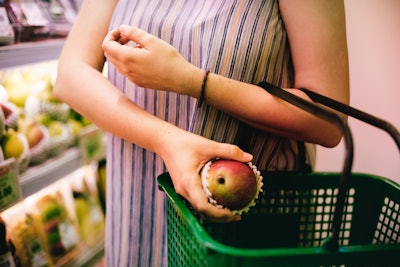
A IRI Consumer Connect survey found that trade issues and a strong labor is impacting consumer spending on food and beverages.
Food inflation softened in the first quarter of 2019 to 1.7 percent compared to 2.2 percent in 2018. Younger millennials (born 1990-1996) are outspending older generations in food dollars while older cohorts are most likely to be using a number of money-saving tactics to keep food bills manageable.
“Younger millennials have been lulled by the historically low unemployment rates, which is boosting their overall confidence and loosening their wallets,” says Joan Driggs, vice president of Content and Thought Leadership for IRI. “At the other end of the spectrum, many baby boomers, retirees and seniors are concerned about their retirement savings due the volatile stock market this year and are watching their expenses more carefully. In recent years, millennials have been less optimistic than older consumers and were spending less. We are now seeing a role reversal that is impacting spending on edibles across the board.”
Younger millennials' edible dollar sales grew by 21.5 percent for March compared to a year ago, while edible dollar sales for retirees and seior is down by 3.8 percent for March compared to a year ago.
Older generations are feeling a bit pinched and are embracing a wide variety of money-saving tactics (younger millennials, older millennials, Gen X, younger boomers, older boomers, retirees and seniors):
- Buy private label: 74%, 88%, 87%, 83%, 79%, 77%
- Try new, lower-priced brands: 70%, 80%, 79%, 73%, 69%
- Visit multiple retailers: 60%, 61%, 57%, 54%, 48%
- Download coupons from retailer/manufacturer website: 46%, 62%, 60%, 56%, 48%, 39%
Elder millennials are more likely to buy food and beverage brands other than their preferred brand because they are on sale and buy brands because they have a coupon. Though, the report found that retirees and seniors won't stray from certain items, with 44 percent regularly purchasing premium quality food and beverage products compared to 38 percent of younger millennials.
Consumers are also looking for healthier items, with nearly six in 10 consumers interested in eating less meat and eight in 10 millennials eating meat alternatives. The need for cleaner and healthier products goes beyond plant-based products, with 78 percent of consumers saying sustainable sourcing of ingredients is an important product attribute.
“The latest generational spending habits combined with increased interest in plant-based and sustainable products, opens up an array of new opportunities for CPG marketers,” adds Driggs. “To be successful marketers must consider the importance of social media reviews, create fresh, relatable content and be authentic when targeting younger consumers. This doesn’t mean marketers should lose sight of older consumers, who still have the greatest purchasing power, but marketers must be very savvy and develop personalized, targeted marketing campaigns that appeal to the various generations of shoppers.”



















